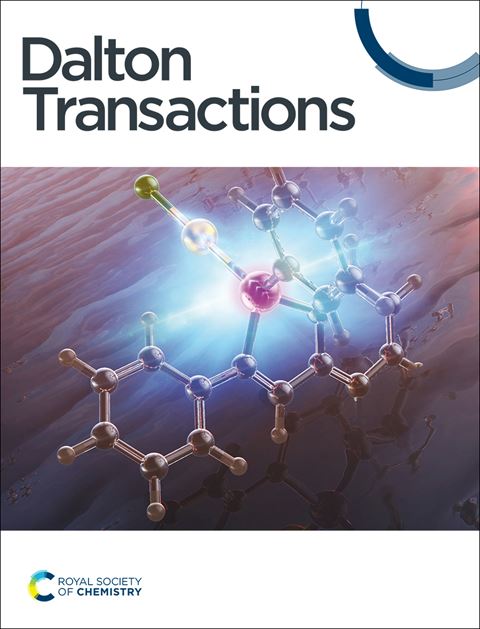Thiacalix[4]arene-Capped Ln(III) Aggregates with “Hand in Hand” Structures and their Luminescent Properties
IF 3.5
3区 化学
Q2 CHEMISTRY, INORGANIC & NUCLEAR
引用次数: 0
Abstract
Two isostructural thiacalix[4]arene-capped Ln8 aggregates with a “hand in hand” structure, designated as {Ln8(μ4-OH)2Cl2(TC4A)4(BCT)2(DMF)(6-x)(CH3OH)(2+x)(H2O)2}•mCH3OH•nDMF (Ln = Tb (1), Eu (2); H4TC4A = p-tert-butylthiacalix[4]arene; H2BCT = 3,5-bis(4’-carboxy-phenyl)-1,2,4-triazole; DMF = N,N’-dimethylformamide), were constructed from two sandwich-like Ln4-(TC4A)2 entities bridged via two BCT2- linkers. These aggregates present a layer-like structure on the ac plane, with poly-nuclear secondary building units (PSBUs) staggered and assembled in three-dimensional space. 1 exhibits green photoluminescence under 379 nm excitation, with an average decay time of approximately 1.15 ms. Notably, the metal-centered luminescence of 1 remains nearly stable even after replacing the DMF molecules with methanol. The structural stability of 1 in various solvents, along with its excellent photoluminescent properties after immersed in water for several months, suggests that it could effectively resist luminescence quenching. This makes it a promising candidate for applications in anti-counterfeiting and luminescence detection. In contrast, 2 does not show visible luminescence under the irradiation of a portable ultraviolet lamp (λ = 326 nm), which could be attributed to the slight difference in ligand-based energy levels. Collectively, these findings enhanced the understanding of the structural diversity and application scenarios of thiacalix[4]arene-capped Ln(III) aggregates.求助全文
约1分钟内获得全文
求助全文
来源期刊

Dalton Transactions
化学-无机化学与核化学
CiteScore
6.60
自引率
7.50%
发文量
1832
审稿时长
1.5 months
期刊介绍:
Dalton Transactions is a journal for all areas of inorganic chemistry, which encompasses the organometallic, bioinorganic and materials chemistry of the elements, with applications including synthesis, catalysis, energy conversion/storage, electrical devices and medicine. Dalton Transactions welcomes high-quality, original submissions in all of these areas and more, where the advancement of knowledge in inorganic chemistry is significant.
 求助内容:
求助内容: 应助结果提醒方式:
应助结果提醒方式:


